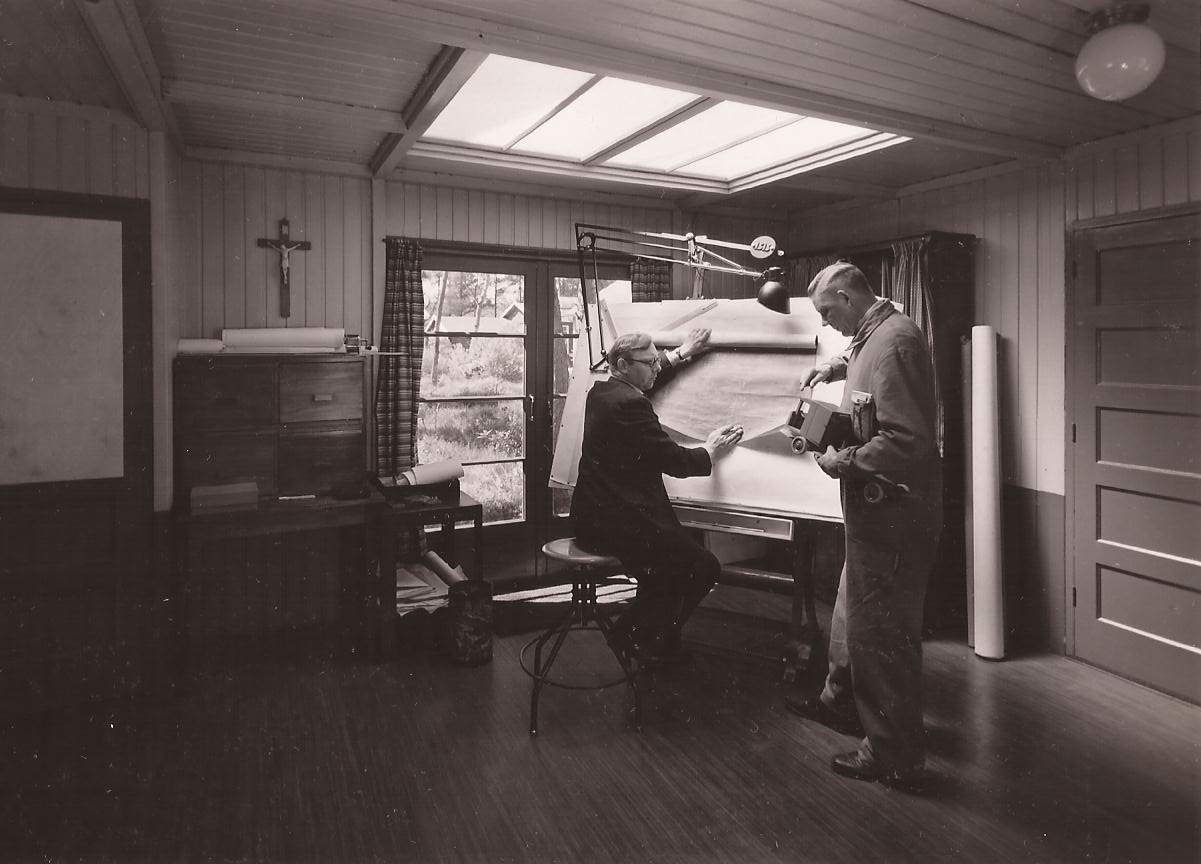
Ko Verzuu and other designers
The vast majority of the ado toys were designed by Ko Verzuu (1901 – 1971). He began in the twenties and did not stop until 1955. What booklets, articles and museum texts fail to mention, however, is that other designers were also asked to design the toys. After Verzuu’s departure, Pieter van Gelder (1902 – 1984) and Monika Buch (1936) took over. Uncover the fascinating backgrounds of these three designers right here!
Ko Verzuu’s hundreds and hundreds of toys
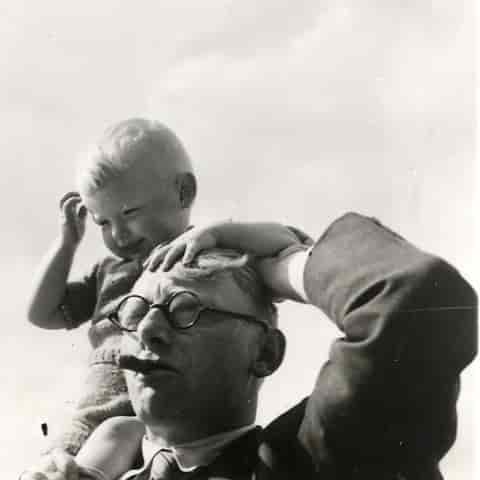
Ko Verzuu, as the leader of the ado workshop, held the responsibility of overseeing the designs. With a span of thirty years, he crafted an extensive collection of hundreds of toys. Prior to commencing production on a model, Verzuu sought the feedback of his eleven children, ensuring the toys, including cars, dollhouse furniture, and building blocks, possessed both interest and durability. Verzuu keenly observed and incorporated contemporary artistic trends, skillfully adopting a formal language inspired by the likes of the Hague School (Dutch art deco), De Stijl, and expressionism. Now, let’s explore some remarkable examples!
Corner chair 599
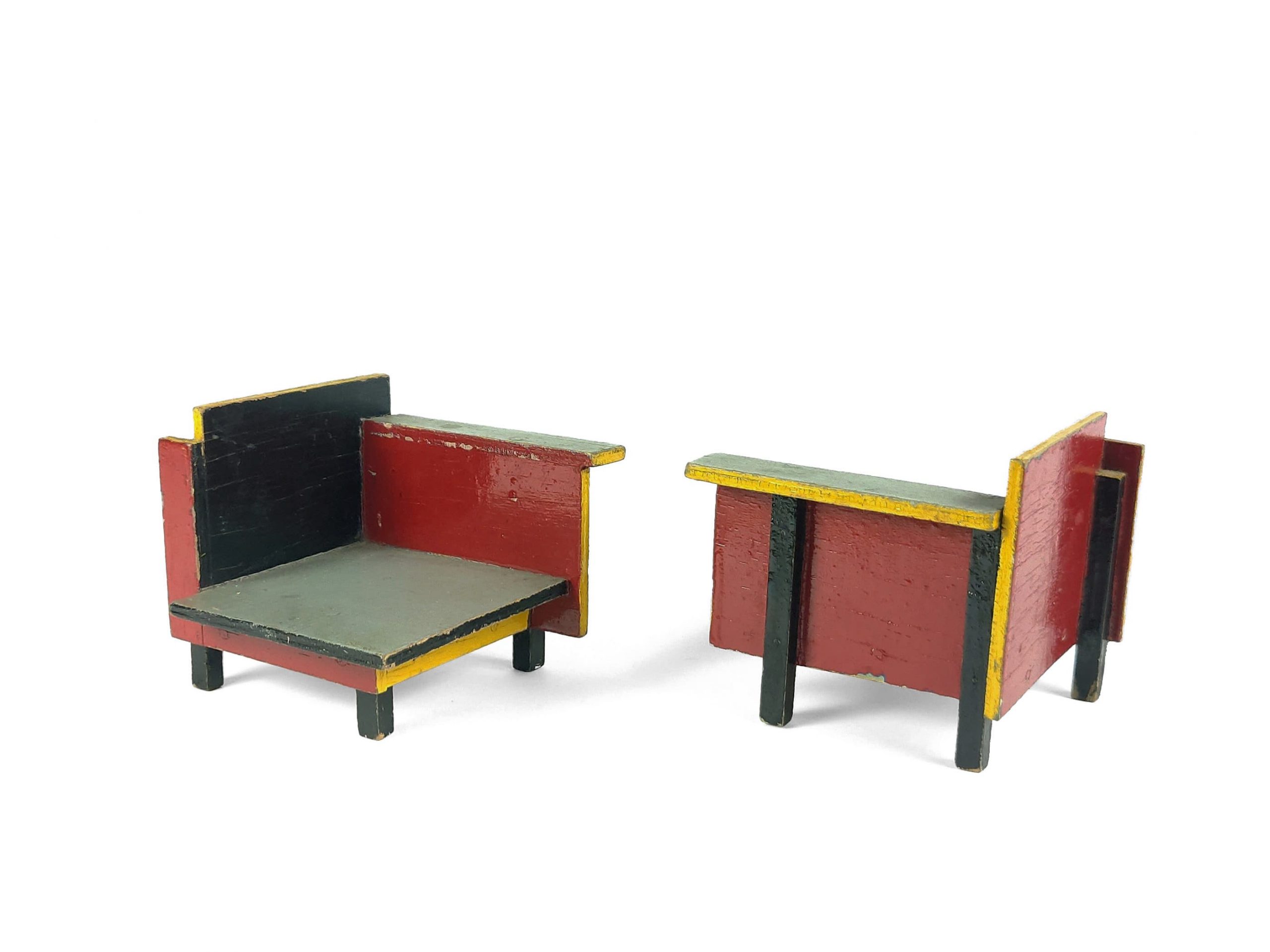
Gerrit Rietveld
It is evident from this corner chair that Verzuu shared design principles with De Stijl man Rietveld. The chair is asymmetrical and the ends were painted in a contrasting color, as with many of Rietveld’s furniture pieces.
Armchair 596
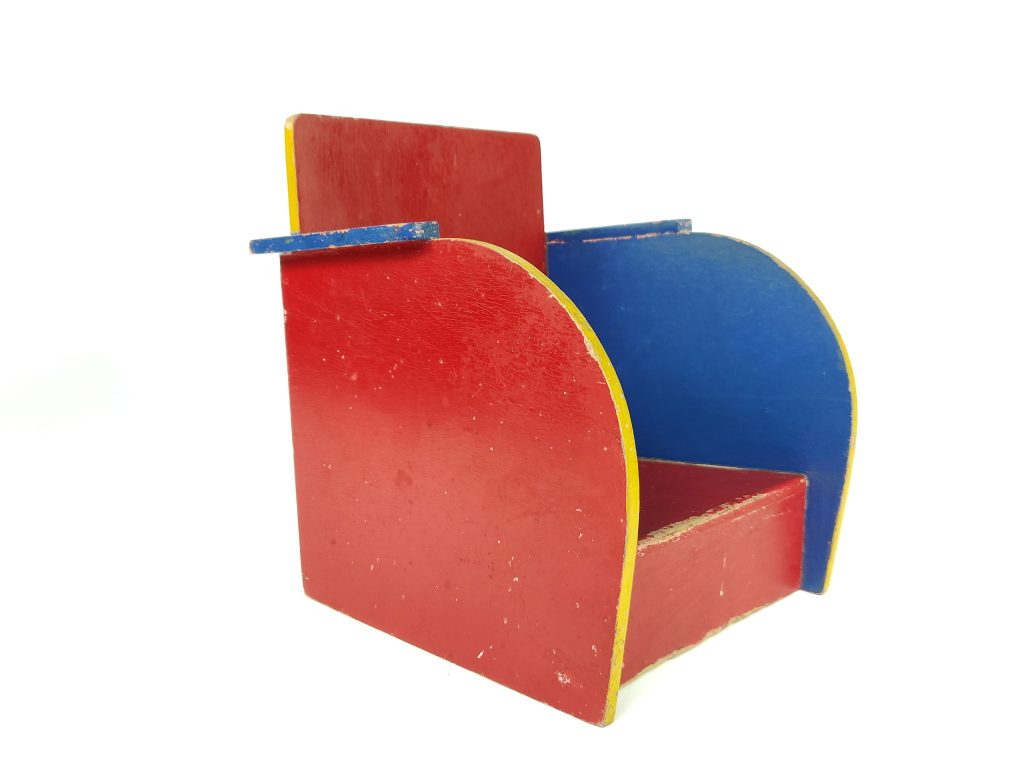
Primary colors
De Stijl is particularly known for the use of the three primary colors. Verzuu also used these bright colors, but certainly not always. Sometimes he even applied them to furniture that was distant from De Stijl in terms of form.
Sideboard 577
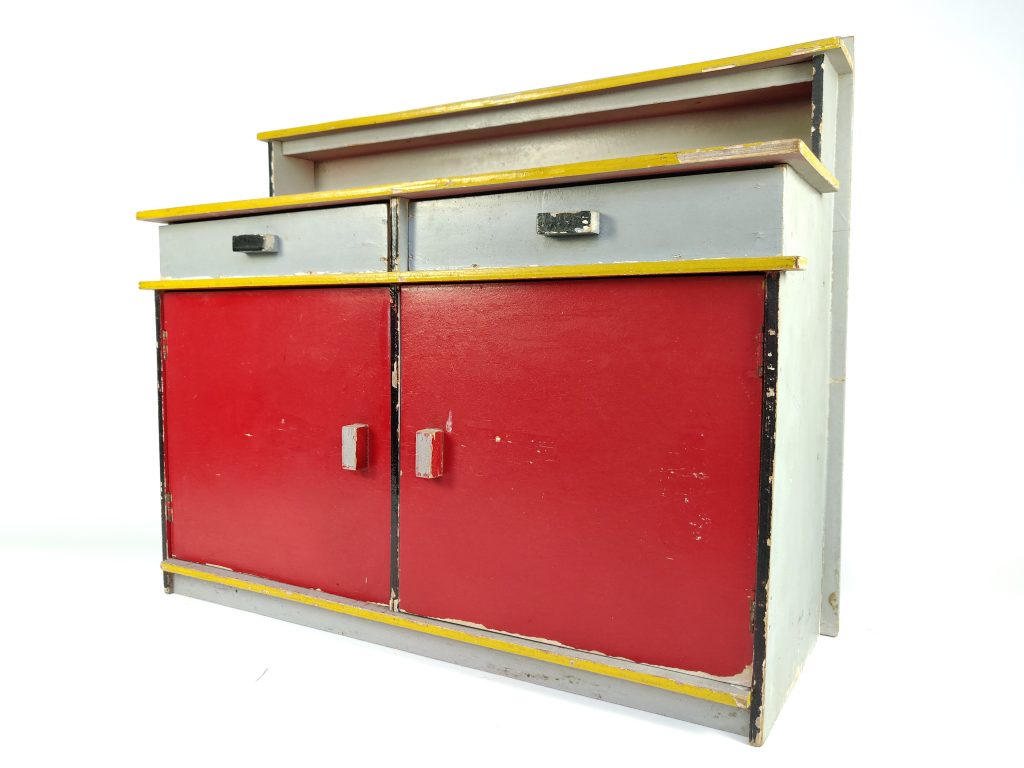
Dutch Art Deco
Stylistic characteristics of Dutch Expressionism and Art Deco are also echoed in Vezuu’s furniture. The straight lines, cubist shapes and cubes as handles in Verzuu’s toys are also widely used by Dutch Art Deco (Hague School) designers.
Verzuu’s chairs, tables and cabinets have often been compared with furniture from the De Stijl art movement. This is not surprising, as the toys were sold in department store Metz & Co. alongside the designs of De Stijl men Gerrit Rietveld and Bart van der Leck. Verzuu looked closely at his surroundings, but not just at De Stijl!
Ko Verzuu’s keen observation of his surroundings extended to his trucks and trains as well. His commercial cars, such as the ‘construction company,’ ‘delivery service,’ and ‘moving company,’ were inspired by the vehicles that traversed the streets. Verzuu even designed his own VW Beetle and Jeep. Moreover, he incorporated developments in automotive engineering into his toy designs, with his cars becoming more aerodynamic during the 1930s. The flat rectangular cab gave way to an angled and ‘fast’ design. Similarly, Verzuu’s train designs directly reflected the novelties in the railroad industry, featuring both unwieldy steam trains and streamlined diesel trains. Through his meticulous attention to detail, Verzuu captured the spirit of real-world transportation in his toys.
Construction company 964 and 984
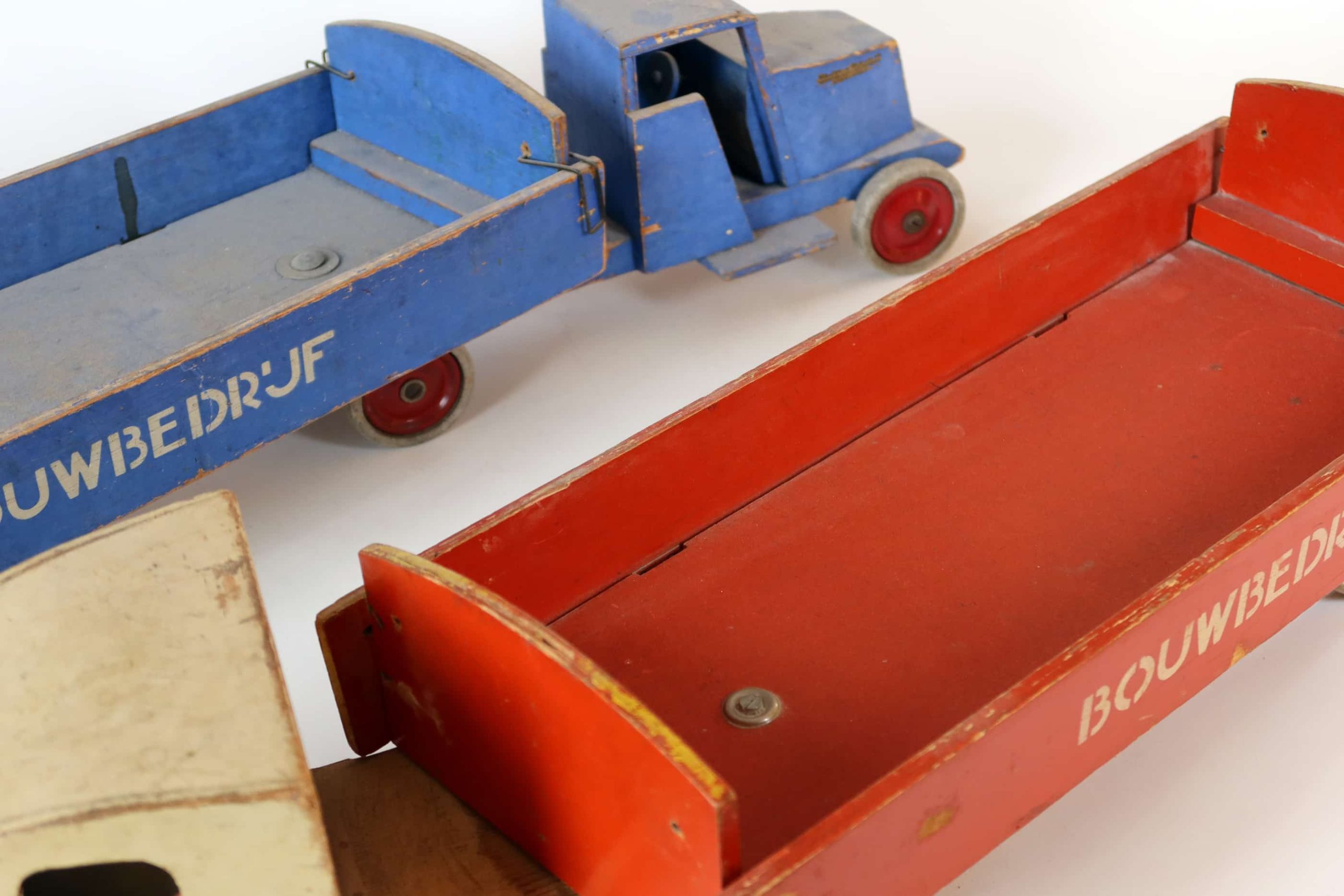
Less is more
The cars are rather minimalist in their designs. For instance, the detailing frequently consists of just an inscription. By leaving out as many details as possible, Verzuu allowed space for the imagination of the child.
Pieter van Gelder
The decorative artist Van Gelder had been designing toys since the 1920s. His early models bear some resemblance to the early designs by Verzuu. But it wasn’t until 1957 that Van Gelder was commissioned by ado. He designed five toys, including Ice Cream Cart 1002 and Rocking Horse 1005. Van Gelder’s models are quite realistic and so, are different than Verzuu’s stylized designs. The rocking horse could also serve as a flower stand, it can hardly be called a toy at all!
Ice cream cart 1002
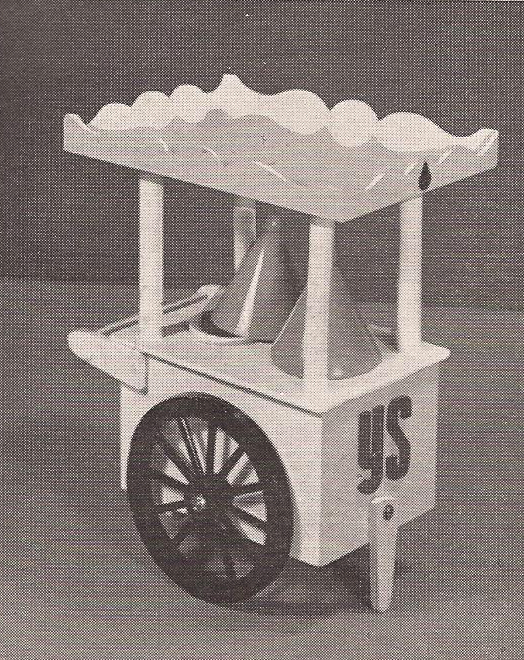
Rocking horse and Flower stand 1005
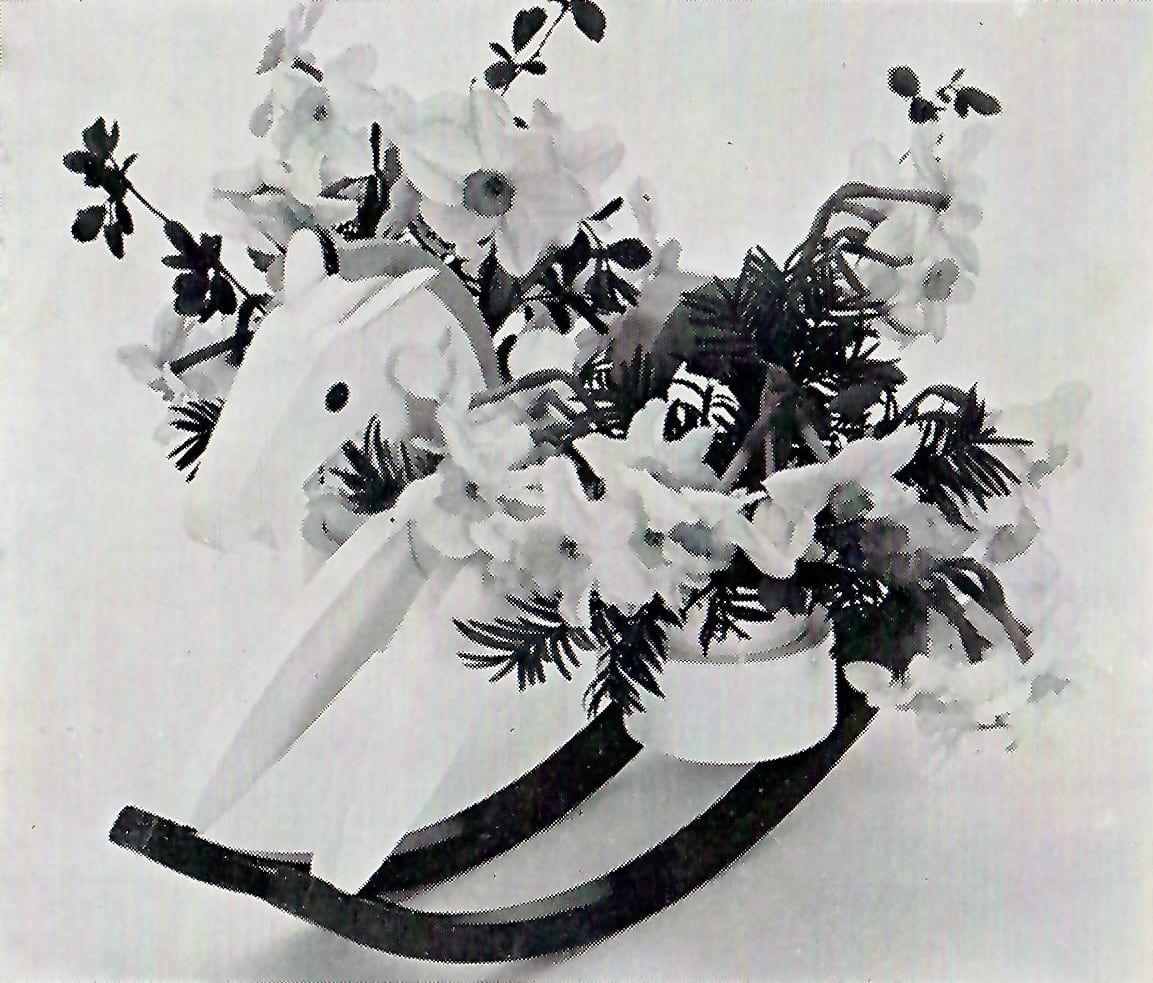
Monika Buch
Entirely different are the toys by Monika Buch. Of her designs, a dozen were executed by ado. Unlike Van Gelder, and like Verzuu, she allows plenty of space for the child’s imagination. In her designs there is always a connection with the existing ado product range.
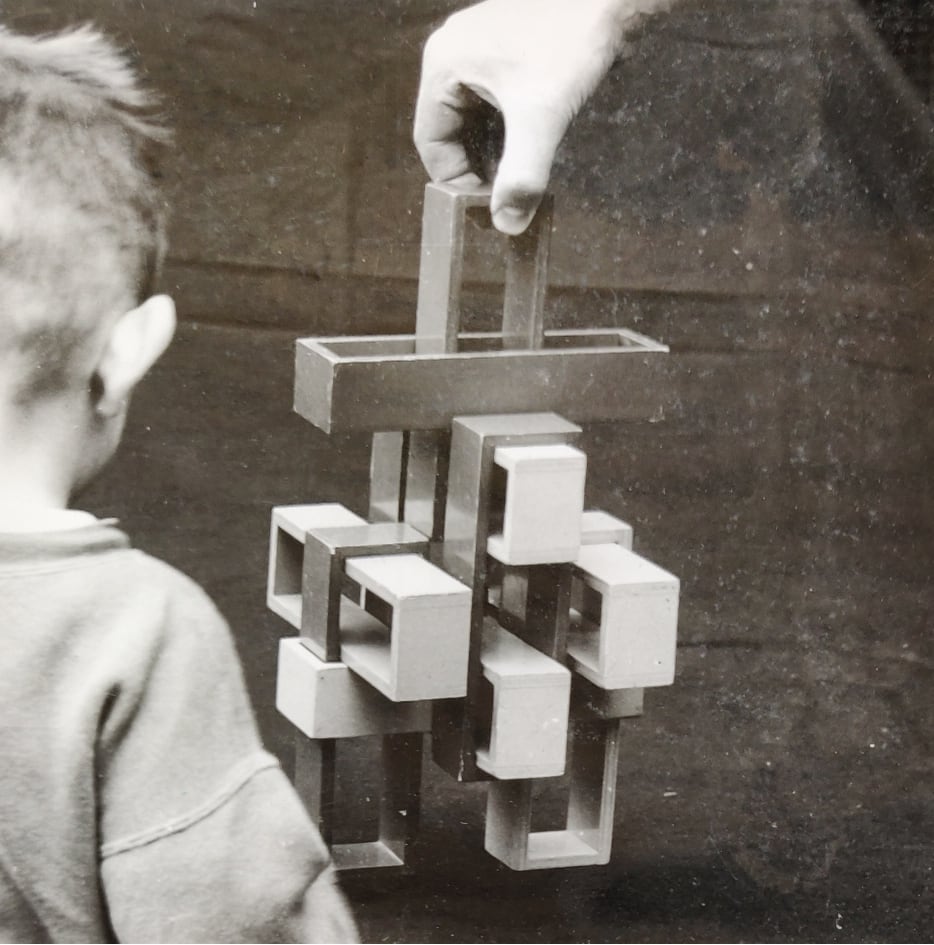
Stacking cubes
Buch deemed Verzuu’s cubes to be too limiting; you could only stack them. So Buch came up with an oblong version with two open sides, lacquered in yellow, blue and red. Now, the possibilities are endless!

Wood, not plastic
In the 1950s, ado made a wooden cart with a plastic horse made by the West German firm Steha. Buch disliked the realistic animal and created her own stylized wooden variant.
The designs by Buch and Van Gelder had a relatively short production period as the sanatorium approached its closure. This period coincided with the decline of wooden toys, as metal die-cast cars gained popularity and inexpensive plastic toys emerged. The commissions to Van Gelder and Buch seem to represent a final, albeit futile, effort to revive ado’s prominence in the changing toy landscape.
